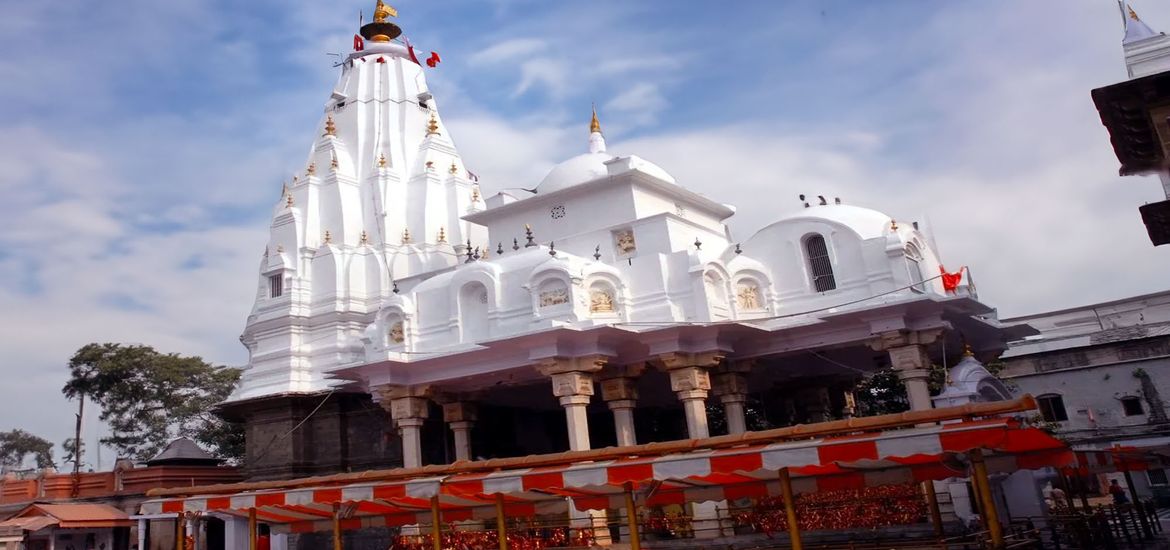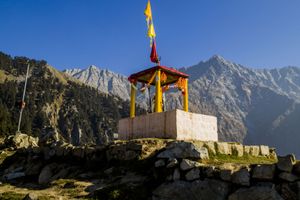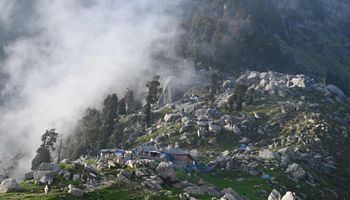With a white and ornate exterior, the Bajreshwari Devi Temple resembles a fort with its tall architecture and strong walls creating a perimeter. As a Hindu religious site, many followers flock to this temple for prayers and enlightenment. Located in Kangra, Himachal Pradesh, discover the secrets behind the Bajreshwari Devi Temple with a look at its history and mythology.
Fascinating Mythology
According to Hindu legend, this temple is part of the 51 Shakti Pithas. After the Goddess Sati sacrificed herself to Lord Shiva, her body was eventually carved into 51 parts. With her left breast falling at this location, a temple was built to commemorate this milestone. Afterward, invaders looted the temple several times over the years because of the riches stored there. Today, the temple remains an important place of worship in the Hindu religion.
Learning About Modern History
Within Hindu texts, the temple's origins were revealed with the story of Pandavas. These brothers dreamed about the Goddess Durga and her demand to build a temple in her honor. To secure their safety, the Pandavas created the Bajreshwari Devi Temple in the small village of Nagarkot.
The original structure, however, was severely damaged in 1905. After this major earthquake, the Indian government decided to rebuild the temple. Now, visitors can enjoy the updated temple in the same location as its original structure.
Exploring the Temple's Grounds
As you enter the main gate, you'll notice it's shaped like a drumhouse. Similar to an orchestra pit, this area remains open to visitors as they enter the first shrine. Here, a pindi or decorated object represents the Goddess Vajreshvari.
Discover other shrines and idols built within the Bajreshwari Devi Temple, too. Familiar names in Hinduism include Dhayanu Bhagat and Bhairav, for instance. With three tombs at this single temple, visitors have many rooms to explore.
Celebrating at the Temple
Two main festivals occur at the temple. First, the Navratri festival is a biannual celebration of the Goddess Durga. Secondly, the Makar Sankranti festival is in January. As a celebration of the zodiac transition from Sagittarius to Capricorn, this celebration marks a fresh start for Hindus in the new year. Depending on the festival, temple visitors might notice elaborate decorations, songs and dances.
Traveling to the Site
Find the Bajreshwari Devi Temple between the Kangra Fort and Kangra Bus Stand. Ideally, take a car or bus on the main road to access the temple. Because of the narrow roads just outside the property, walking from the main road and into the temple is necessary.
Luckily, lining the streets are many vendors selling authentic Indian goods and tasty foods. Take your time as you maneuver through the streets. Immersing yourself in the culture can only enhance your time at the temple.
Overall, there may be numerous visitors at the temple each day. For a more intimate visit, start your grounds exploration in the early morning. By avoiding the afternoon and evening crowds, the temple's spiritual presence can inspire any visitor regardless of his or her religious background.























